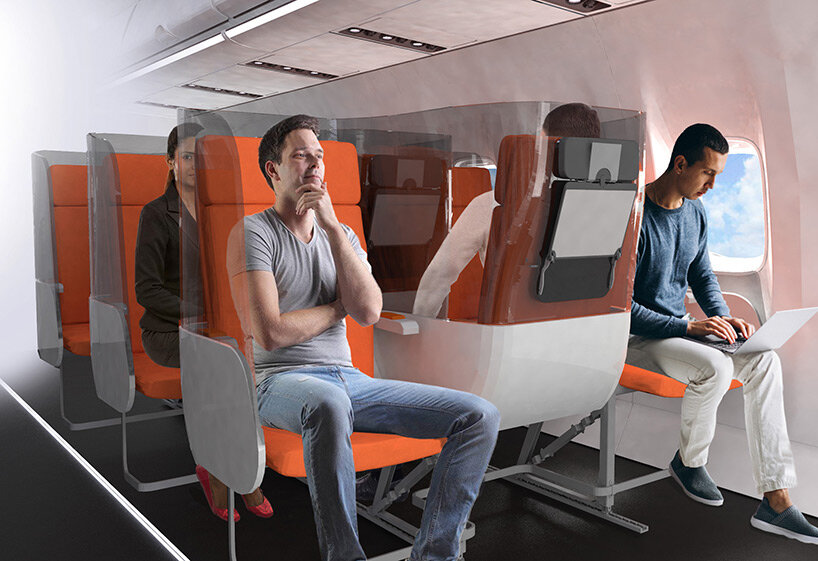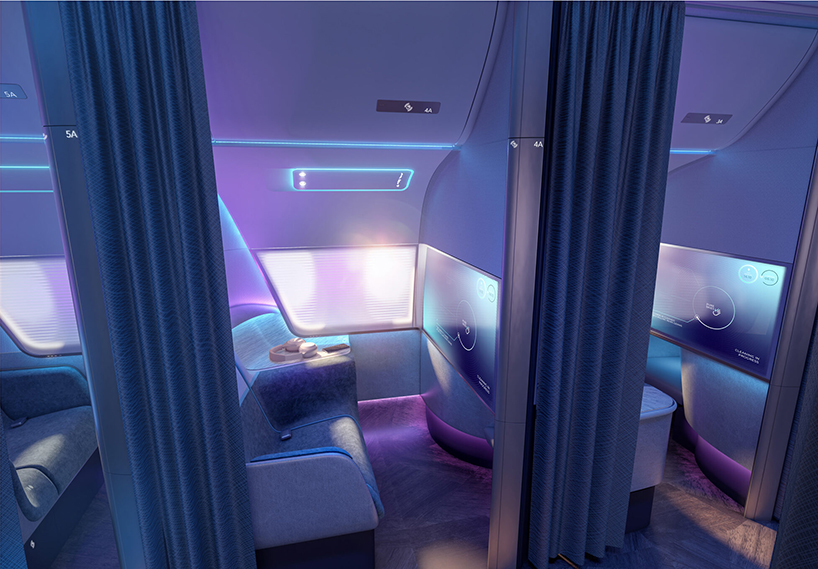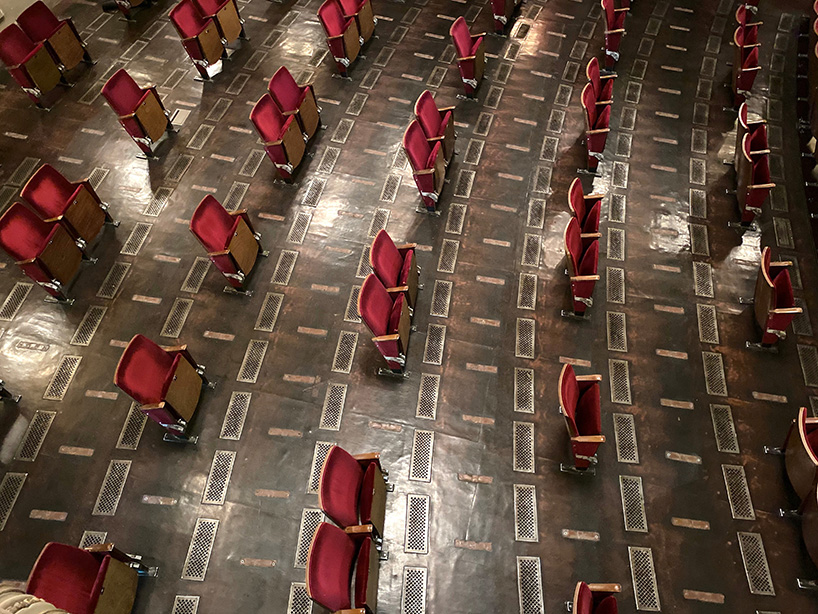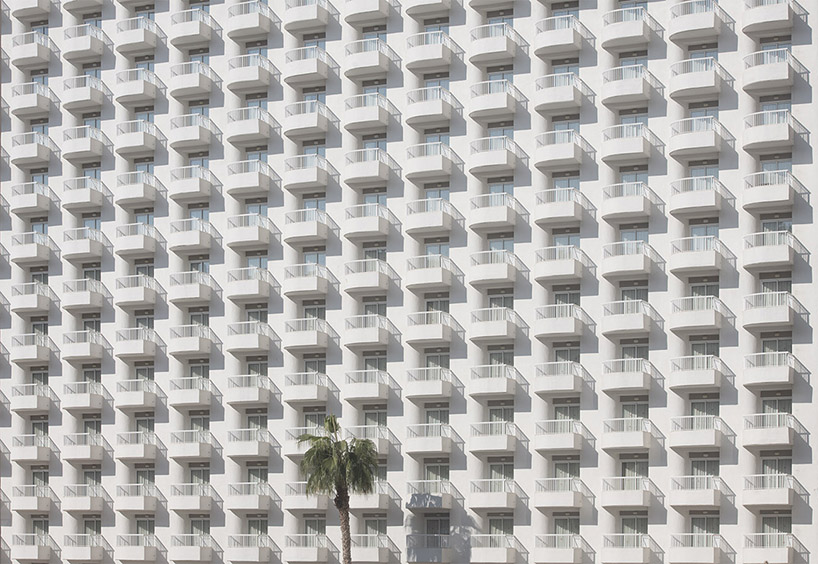TECH predictions for 2021: in a year when hotels laid empty, broadway went dark, and the loathsome middle seat became ever-more unpleasant, the future of the holiday is — quite literally — up in the air. international travel restrictions and worldwide lockdowns left planes grounded across the globe, fleets of aircraft permanently retired, and thousands of journeys withdrawn. the dramatic drop in demand for passenger air transport has wreaked havoc on the aviation industry, and shock waves reverberated across economies worldwide. with so few people flying, so too were hotels bare of bustling guests, attractions abandoned, and cities left vacant without visitors. the disruption of the once-quotidian travel dynamic has ensued a whirlwind of ideas aiming to re-imagine post-pandemic aviation and hospitality, while simultaneously encouraging the discovery of destinations on your own doorstep…

could reverse airplane seating be the new way to fly post COVID-19?
more on designboom here
frequent flyers and occasional travelers alike can likely still summon the pesky reminders of an uncomfortable flight, long before COVID-19 — sandwiched in a small seat, fixed upright, and forced into unnatural postures. can post-pandemic airplane design recognize the need for a new configuration, and offer safety — and sanity — with it? designers have continued to share their ideas. priestmangoode unveiled their vision of tomorrow’s air travel dubbed ‘pure skies’, aiming to help reduce passenger anxiety, improve personal space and hygiene, and facilitate touch-free journeys. meanwhile, US-based startup zephyr aerospace unveiled the design of a new airline seat and bed combination for economy class — a lie-flat accommodation able to retrofit existing commercial aircrafts while complying with social distancing measurements for airlines.
or could reverse airplane seating be the new way to fly post COVID-19? an italian company shared a widely-debated proposal for the future of air travel. although studies claim that cabin air quality is comparable to what is observed in other indoor environments — such as offices, schools, and homes — airlines are still seeking ways for passengers to safely maintain social distancing. avio interiors’ ‘janus’ proposal references the two-faced ancient roman god with a design that has passengers facing both ways. ‘this proposal is distinguished by the reverse position of the center seat of the triple to ensure the maximum isolation between passengers seated next to each other,’ explains the company. meanwhile, passengers seated in the side seats are oriented in the direction of flight. each seat is surrounded on three sides by a shield that limits breath from being directly passed to the adjacent seats. the arrangement allows all three passengers in a row to be separated from each other, as well as from flight attendants using the aisle.
in taking a holistic approach to health and safety on board, high-performance fabrics for aircraft interior tapis released a line of leather with ‘antimicrobial, silver ion technology embedded in the surface layers that prevent leaching and efficacy loss,’ CNN reports, which the company explained ‘provides a safe shield for aerosol borne micro-organisms within the aircraft to create a low risk, safe environment for passengers.’

priestmangoode’s projects its ‘pure skies’ cabin design as a vision of tomorrow’s air travel
more on designboom here
meanwhile in new york, broadway has been dark since march, ‘a depressing scenario and an enormous financial loss to new york city,‘ reports the wall street journal, while the new york times forecasts that tourism in may not fully recover until 2025. in the german capital, aiming to restructure itself to safely host people, the berliner ensemble revealed a stripped-down interior with most chairs ripped out to ensure social distancing. the new layout sees 200 seats instead of the previous 700 to ensure the german government requirements of at least 1.5 meters of distance between people.
‘the outlook for tourism is extraordinarily uncertain, and recovery will depend on the interlinked consequences of the economic and health crisis on demand and supply side factors,’ says the organisation for economic co-operation and development in its report on rebuilding tourism for the future. ‘these include the evolution of the pandemic, availability of a vaccine (or alternative control measures), and the lifting of travel restrictions, as well as the survival and readiness of businesses throughout the tourism ecosystem to meeting demand, impacts on consumer confidence and travel behaviour, and developments in the wider economy.’
with an absence of tourists and an uncertain timetable for the resumption of travel, how can cities chart a way forward for tourism? many countries looked inwards and offered new ways for residents to experience their own environments, and in turn, boost an economy in crisis. in late july, the japanese government initiated the go to travel campaign, which offered big discounts on travel within the country and eligible to residents only. in encouraging local tourism, the promotion simultaneously supported the hospitality industries by providing substantial, government-subsidized discounts for stays at registered lodgings, and travel plans purchased through agents.
in june, airbnb announced its support of local travel and economic growth by initiating partnerships with worldwide destinations, and launching its ‘go near’ campaign. in a survey commissioned by airbnb, nearly half of US-based respondents said they would prefer to stay within a day’s drive for their first trip once lockdown restrictions lift. tapping into the demand for nearby trips, airbnb has made major updates to its app and homepage to ‘help guests rediscover the magic in their own backyards by making it easier to book local travel, including at the last minute,’, including featuring local trip ideas and highlighting nearby getaways.

the berliner ensemble removed seats from its theater to guarantee social distancing
more on designboom here
what types of travelers should hotels be targeting then? the american hotel & lodging association conducted a survey of more than 1,200 members from november 10-13, 2020. they found that ‘71% of hotels won’t make it another 6 months without further federal assistance given current and projected travel demand. 77% will be forced to lay off more workers.hotels are still struggling to keep their doors open and are unable to rehire all their staff, let alone make mortgage payments, due to the historic drop in travel demand. more than half of respondents (59%) said they are in danger of foreclosure on their hotel(s).’
but with airline travel screeching to a near-standstill, the annual family vacation evolved to center around more individual, local experiences — a shift that compelled hotel owners to facilitate ways to accommodate these latest lodgers. in an article published in august on how hotels are pivoting in the new reality, marketwatch spoke with the owner and innkeeper of the historic smithton inn located in pennsylvania dutch country, who noticed an emerging trend in guest stays as lockdown measures eased over the summer — ‘work-cations’. those working from home and seeking a change of atmosphere, privacy, or just a little peace and quiet packed up their laptops and checked in to a local hotel, soon zooming-in to meetings with colleagues from the comfort of a secluded and and fully-serviced room. this trend forced the historic hotel owner to accommodate the technological needs of remote workers — not the same as the everyday holiday-goer. so, she soon hardwired each room with internet access and invested in larger, smart TVs. ‘she also bought smaller individual coffee pots for each table in the dining area, since the bigger, public coffee urn could no longer be used,’ marketwatch reports, ‘and she bought plate covers and trays, so she could deliver food to rooms for people who wanted to remain socially distanced…with the new room upgrades, she can even consider marketing to guests wanting to work for a day, but not stay the night.’

benidorm’s empty hotels and the impact of COVID-19 are captured by manuel alvarez diestro
more on designboom here
so fasten your seat belts, it may be a bumpy ride, but a renewed future for travel is on the horizon — whether you find yourself sitting in a reversed-airplane seat, or taking a stay-cation in your very own city.
TECH predictions for 2021 (4)
PRODUCT LIBRARY
a diverse digital database that acts as a valuable guide in gaining insight and information about a product directly from the manufacturer, and serves as a rich reference point in developing a project or scheme.







